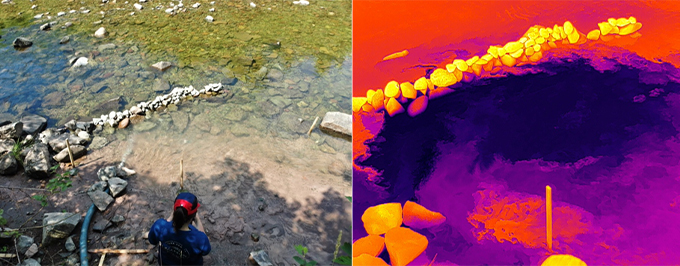This post was originally published on this site
PITTSBURGH — Salmon may now have their own version of human air conditioning.
This past summer, hundreds of fish in the Wrights River in Nova Scotia, Canada, found reprieve from the heat in human-generated plumes of cold water, civil engineer Kathryn Smith reported October 17 at the Geological Society of America meeting. The work, though only proof of concept, could aid efforts to conserve cold-water species amid the widespread warming of rivers due to climate change (SN: 10/20/22).
When water temperatures get too hot, fish can become stressed or even die. In rivers, Atlantic salmon and other cold-water species sometimes escape the heat by flocking to cooler areas, which often arise near groundwater springs or relatively cool tributaries.
Lots of work has been done to preserve and augment these naturally occurring refuges, said Smith, of Dalhousie University in Halifax, Canada, “but there hasn’t really been an emphasis or focus on if we can create cold-water habitat.”
So she and her colleagues pumped groundwater that was about 9° Celsius (or about 48° Fahrenheit) from a nearby well into the river, manifesting an artificial plume of water that could be as much as 20 degrees Celsius cooler than the surrounding water.

The plume attracted several hundred fish of varying life stages and species, including Atlantic salmon and brown trout. Most were alevins — juvenile fish still attached to yolk sacs — that occupied the plume throughout the tests. But when a heat wave brought on maximum water temperatures of about 30° C, more mature fish also took shelter in the plume.
For a pump-free approach, the team also rerouted some water from the river into an underground trench, where it cooled before reentering the river. Though this method lowered the water temperature by only a few degrees Celsius, fish were observed frequenting the passively cooled flow throughout the summer.
More work lies ahead to determine how many of these sites would need to be constructed and sustained to significantly benefit fish populations, and how to do so while keeping energy costs low, says John Ackerman, a consulting engineer based in Hazleton, Pa., who was not involved in the research. But the researchers are demonstrating that these solutions can work, he says. “The concept is solid.”
